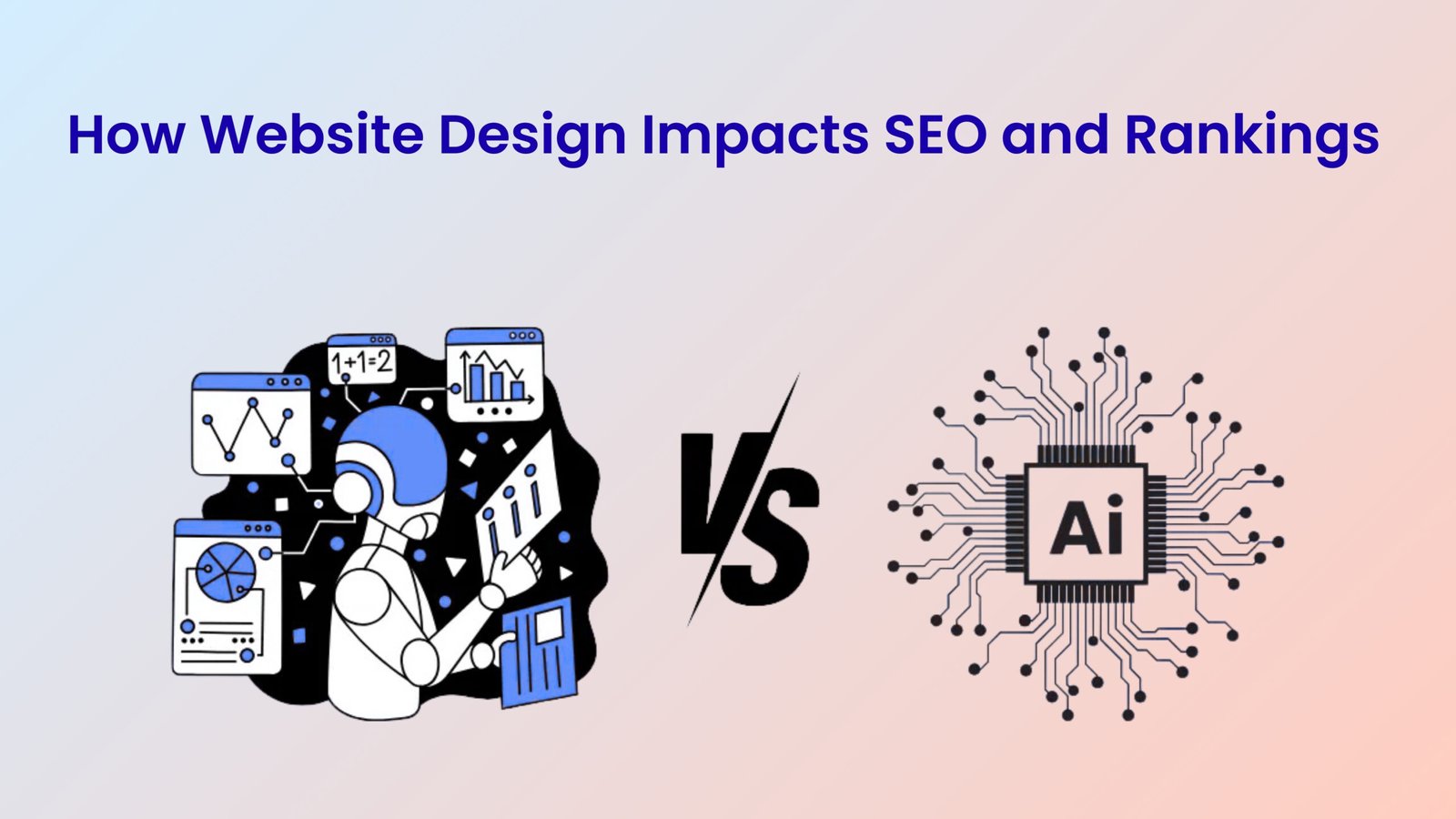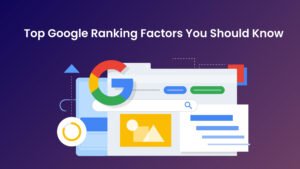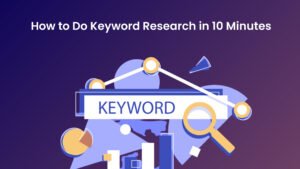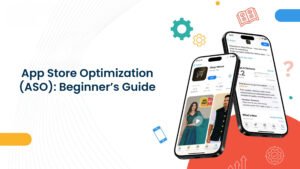AI vs Machine Learning: Key Differences Explained
In today’s fast-paced business world, leaders are hearing about Artificial Intelligence (AI) and Machine Learning (ML) almost every day. Yet, confusion remains around these terms. Many decision-makers ask: Are AI and ML the same? When should my business invest in AI versus Machine Learning? What real impact can these technologies have on operations, revenue, or customer experience?
Understanding the difference between AI and ML is more than a technical exercise—it’s a strategic necessity. AI basics cover the broader concept of machines mimicking human intelligence, while ML explained focuses on teaching systems to learn patterns from data and improve automatically over time. Both can transform business processes, but using them effectively requires clarity about their capabilities and limitations.
In this blog, we’ll break down AI vs ML, show real-world AI vs machine learning examples, and provide actionable insights for business leaders. By the end, you’ll have a clear picture of how each technology can create value, and how to make informed decisions when implementing AI or ML in your organization.
Understanding the Basics: AI vs ML
Before making strategic decisions, it’s essential to understand what AI and Machine Learning really are, how they differ, and how they overlap. Many businesses jump into technology adoption without this clarity, which can lead to wasted time, budget, and effort. Let’s break it down.
What is Artificial Intelligence (AI)?
Artificial Intelligence, or AI basics, refers to the broader concept of machines performing tasks that typically require human intelligence. This includes reasoning, problem-solving, understanding natural language, and even recognizing patterns in data.
For business leaders, AI is not just about futuristic robots—it’s about improving decision-making, automating routine tasks, and enhancing customer experiences. Common AI applications include:
-
Intelligent chatbots handling customer inquiries 24/7
-
Predictive analytics for sales or inventory management
-
Autonomous systems like self-driving vehicles or warehouse robots
AI acts as the umbrella technology under which various methods, including Machine Learning, operate. It is about building systems capable of thinking and adapting, not just following preset rules.
What is Machine Learning (ML)?
Machine Learning, or ML explained, is a subset of AI focused specifically on data-driven learning. Instead of programming every step manually, ML enables systems to identify patterns, make predictions, and improve over time based on data inputs.
In practice, ML helps businesses make smarter decisions by uncovering insights hidden in large datasets. Examples include:
-
Recommendation engines on e-commerce platforms
-
Fraud detection in banking and finance
-
Sales forecasting using historical trends
Think of Machine Learning as the engine that powers intelligent AI applications. Without ML, AI systems would rely solely on static rules, limiting their adaptability and accuracy.
AI vs ML: High-Level Comparison
To make this even clearer, here’s a direct comparison for business leaders evaluating AI vs ML:
| Aspect | AI | ML |
|---|---|---|
| Definition | Systems performing tasks requiring human intelligence | Systems that learn from data and improve performance over time |
| Scope | Broad, includes reasoning, perception, and decision-making | Narrower, focused on learning patterns and predictions |
| Learning Capability | Can include pre-programmed logic or adaptive learning | Fully data-driven and improves automatically with more data |
| Examples | Chatbots, autonomous vehicles, predictive analytics | Recommendation engines, fraud detection, demand forecasting |
| Business Use Cases | Process automation, customer engagement, operational efficiency | Data-driven decision-making, personalization, predictive insights |
This table illustrates why AI vs ML is more than semantics. Leaders need to understand where each fits in the strategy and which delivers tangible business outcomes.
Common Confusions: AI vs Machine Learning Examples
Even after understanding the basics, many business leaders still struggle with the question: How do AI and Machine Learning differ in practice? Let’s clarify this with real-world AI vs machine learning examples, showing how each can drive business value.
Real-World AI Examples
AI applications extend far beyond buzzwords. Here are a few concrete examples that illustrate AI basics in action:
-
Intelligent Chatbots: AI-powered chatbots can handle customer queries 24/7, respond contextually, and escalate complex issues to human agents. This reduces support costs and improves customer satisfaction.
-
Predictive Analytics: AI analyzes historical and real-time data to forecast sales, identify trends, and anticipate operational challenges. Companies using AI analytics report up to a 30% improvement in decision-making speed.
-
Autonomous Systems: From warehouse robots to self-driving vehicles, AI enables machines to act intelligently, navigating environments, making decisions, and optimizing operations without human intervention.
These examples highlight AI’s broad capabilities and its role as a strategic enabler for businesses.
Real-World Machine Learning Examples
Machine Learning is where AI gets smarter over time. Here are some practical ML explained examples that businesses are using today:
-
Recommendation Engines: E-commerce platforms like Amazon or Netflix use ML to suggest products or content based on user behavior. Personalized recommendations can increase conversion rates by up to 20%.
-
Fraud Detection: Banks and fintech companies use ML algorithms to detect unusual transactions, preventing fraud in real time. ML models improve automatically as they process more transaction data.
-
Sales Forecasting: ML analyzes historical sales and market trends to provide accurate forecasts, helping businesses plan inventory and marketing strategies more efficiently.
Unlike broader AI, Machine Learning relies heavily on data. Its strength lies in uncovering hidden patterns and optimizing decisions that would be impossible to program manually.
Machine Learning vs AI in Business Strategy
Understanding the distinction is critical for strategic planning:
-
When to Use AI: Implement AI when your business needs systems that can mimic human reasoning or automate complex workflows. For example, deploying AI for predictive analytics or customer service automation.
-
When to Use ML: Use ML when your goal is to analyze large datasets, detect patterns, and make predictions that improve over time. For example, ML-powered recommendation systems or predictive maintenance in manufacturing.
-
Combined Approach: Many successful businesses use AI and ML together. For instance, an AI-driven customer service chatbot may use ML to learn from interactions, improving response quality over time.
By clearly distinguishing AI vs ML, leaders can allocate resources effectively, prioritize initiatives, and avoid costly missteps.
The Technical Perspective: How AI and ML Work
For business leaders, understanding the technical workings of AI and Machine Learning doesn’t require a degree in computer science, but knowing the mechanics helps in making informed strategic decisions. Let’s break down AI basics, ML explained, and how they operate in real-world business scenarios.
AI Basics in Action
Artificial Intelligence can function in two main ways: rule-based systems and cognitive AI.
-
Rule-Based Systems: These follow pre-defined logic. For example, a basic AI system in customer service might route tickets based on keywords or priority levels. It’s predictable but limited in adaptability.
-
Cognitive AI: This is where AI mimics human reasoning. Cognitive AI can interpret natural language, understand context, and even make decisions in dynamic environments. For instance, an AI-powered supply chain platform can adjust delivery schedules in real time based on weather, inventory, and demand patterns.
Illustration Example: Imagine a decision tree for customer service automation. AI evaluates each customer query, applies rules and reasoning, and either resolves the issue automatically or escalates it to a human agent. This combination of logic and learning optimizes both efficiency and experience.
ML Explained Step by Step
Machine Learning is the engine behind adaptive AI systems. Understanding ML explained requires a look at its main approaches:
-
Supervised Learning: The system learns from labeled data to predict outcomes. Example: predicting customer churn based on past behavior.
-
Unsupervised Learning: The system identifies hidden patterns in unlabeled data. Example: segmenting customers based on purchasing habits.
-
Reinforcement Learning: The system learns by trial and error, receiving feedback to improve decisions. Example: autonomous robots optimizing warehouse routes.
Comparison Table of ML Techniques:
| ML Technique | How It Works | Business Application |
|---|---|---|
| Supervised Learning | Learns from labeled datasets | Predicting sales or customer churn |
| Unsupervised Learning | Detects patterns in unlabeled data | Market segmentation, anomaly detection |
| Reinforcement Learning | Learns via feedback loops | Supply chain optimization, robotic automation |
These techniques allow ML models to continuously improve, making them invaluable for data-driven decision-making.
AI vs Machine Learning Examples in Implementation
Understanding theory is one thing, seeing it applied is another. Here are two practical case studies:
-
Case Study 1: AI-Driven Supply Chain Optimization
A logistics company implemented AI to predict delays and reroute shipments dynamically. The system used cognitive AI to interpret real-time traffic, weather, and inventory data. Result: a 15% reduction in delivery delays and a 10% decrease in operational costs. -
Case Study 2: ML-Powered Customer Personalization
An e-commerce platform implemented ML to recommend products based on customer behavior and purchase history. The ML models improved over time, increasing personalized offers’ accuracy. Result: a 20% increase in conversion rates and a 12% boost in average order value.
These examples show how AI and ML work in tandem: AI provides intelligent decision-making, while ML ensures continuous learning and improvement.
Benefits and Challenges of AI vs ML for Businesses
When evaluating AI vs ML for your business, it is essential to understand both the opportunities and the obstacles. Decision-makers who grasp these factors can plan realistic adoption strategies and maximize value.
Benefits
AI and Machine Learning provide tangible advantages across operations, customer engagement, and strategic decision-making.
-
Efficiency Improvement: AI can automate routine tasks, while ML optimizes processes based on data patterns. Businesses report up to 30 percent faster operations when combining both.
-
Cost Reduction: AI-powered systems reduce the need for manual intervention, and ML helps predict resource requirements more accurately, saving on inventory and labor costs.
-
Enhanced Decision-Making: ML explained allows leaders to make data-driven decisions, while AI provides predictive insights for strategic planning.
-
Innovation and Competitive Advantage: Companies using AI and ML gain the ability to innovate in products and services faster than competitors.
Table: Benefits Mapped to AI and ML
| Benefit | AI | ML |
|---|---|---|
| Efficiency | Automates complex tasks | Optimizes workflows using data |
| Cost Savings | Reduces manual intervention | Predicts resource needs accurately |
| Decision Support | Provides predictive insights | Enables data-driven decisions |
| Innovation | Powers intelligent systems | Drives personalization and new solutions |
Challenges
Despite the clear advantages, businesses face challenges when adopting AI and ML. Knowing these challenges allows for proactive solutions.
-
Data Quality: ML relies on accurate, clean, and comprehensive data. Poor quality data can lead to incorrect predictions.
-
Talent Shortage: Skilled AI and ML professionals are limited, making recruitment and training critical priorities.
-
Integration Complexity: Implementing AI and ML requires alignment with existing systems and processes. Without proper planning, projects can fail to deliver expected results.
-
Ethical and Compliance Concerns: Decision-making based on AI and ML must adhere to privacy and regulatory standards to maintain trust and avoid legal issues.
Suggested Solutions:
-
Invest in data governance and cleaning processes
-
Upskill internal teams or partner with AI-focused service providers
-
Start with pilot projects to ensure smooth integration
-
Implement clear ethical guidelines and monitor AI and ML outcomes
By addressing these benefits and challenges, leaders can make strategic decisions on AI vs ML adoption with confidence, ensuring measurable business impact.
Implementation Strategies for AI and ML
Understanding AI vs ML is only part of the journey. The next step for business leaders is to implement these technologies strategically to drive real value. This requires careful planning, clear objectives, and measurable outcomes.
How to Start with AI in Your Business
-
Assess Business Processes: Identify areas where intelligence can improve efficiency, accuracy, or customer experience. Examples include customer service, supply chain operations, and predictive analytics.
-
Identify Pain Points: Determine where delays, errors, or missed opportunities exist. This helps prioritize AI investments with the highest impact.
-
Select Relevant AI Tools: Not all AI solutions fit every business. Choose tools that align with your goals, whether for natural language processing, predictive analytics, or process automation.
-
Pilot and Evaluate: Start small with a pilot project to measure ROI and learn from implementation challenges before scaling across the organization.
How to Implement Machine Learning
-
Collect and Clean Data: ML explained emphasizes that data is the foundation. Ensure your data is accurate, structured, and comprehensive for meaningful predictions.
-
Train Models: Select the right ML algorithms based on your objectives. Supervised learning works for predicting outcomes, unsupervised learning for identifying patterns, and reinforcement learning for optimization tasks.
-
Integrate into Workflows: Embed ML models into operational systems or decision-making tools so insights are actionable in real time.
-
Monitor, Optimize, and Scale: Continuously track model performance, refine algorithms, and expand ML solutions across business functions for maximum impact.
Best Practices for Combining AI and ML
-
Adopt Incrementally: Avoid attempting enterprise-wide implementation in one step. Start with high-impact projects and scale gradually.
-
Align with KPIs: Ensure every AI and ML initiative is tied to measurable business outcomes such as revenue growth, operational efficiency, or customer satisfaction.
-
Invest in Talent and Training: Equip teams with the skills needed to manage, monitor, and optimize AI and ML systems.
-
Avoid Common Pitfalls: Misaligned objectives, poor-quality data, and unrealistic expectations are the leading causes of failure. Proactive planning prevents costly mistakes.
By following these implementation strategies, business leaders can confidently move from understanding AI vs ML to applying these technologies in a way that drives measurable results.
Future Trends in AI and Machine Learning
AI and Machine Learning are evolving rapidly, and staying ahead of trends is critical for business leaders who want to remain competitive. Understanding where these technologies are headed allows companies to plan long-term strategies and make informed investment decisions.
Emerging Trends
-
Generative AI: Systems that can create content, designs, or even code are becoming mainstream. Businesses can leverage generative AI for marketing, product development, and content automation, reducing time-to-market and creative costs.
-
AI-Powered Analytics: The next generation of AI combines predictive and prescriptive analytics, enabling real-time business decisions based on large, complex datasets. This transforms planning, forecasting, and strategy execution.
-
ML Automation: Machine Learning processes are becoming increasingly automated. AutoML platforms allow businesses to build, deploy, and optimize models faster, lowering the barrier to entry for organizations without large data science teams.
-
Edge AI and Real-Time Processing: AI and ML applications are moving closer to where data is generated. Real-time insights from IoT devices or customer interactions enable faster responses and improved operational efficiency.
Strategic Implications for Business Leaders
-
Faster Decision-Making: AI vs ML is no longer just about automation. These technologies now drive strategic decisions with speed and precision.
-
Data as a Competitive Asset: Companies that capture, clean, and leverage data effectively gain a significant advantage. ML explained helps turn raw data into actionable insights that improve customer experience and operational outcomes.
-
Industry-Specific Adoption: Finance, healthcare, retail, and logistics are leading AI adoption. Businesses in these sectors are experiencing measurable gains in efficiency, personalization, and risk management.
Chart: AI Adoption Trends by Industry (2025 Projection)
| Industry | AI Adoption Level | Primary Use Cases |
|---|---|---|
| Finance | 75% | Fraud detection, risk analysis, customer insights |
| Healthcare | 65% | Diagnostics, patient monitoring, predictive treatment |
| Retail | 60% | Recommendation engines, inventory forecasting, personalization |
| Logistics | 55% | Route optimization, supply chain automation, predictive maintenance |
These trends illustrate that AI and ML are not optional tools for forward-thinking businesses. They are strategic levers that enhance operational efficiency, customer experience, and long-term competitiveness.
Conclusion
Understanding the difference between AI and Machine Learning is no longer a technical curiosity—it is a strategic necessity for business leaders. AI basics provide a broad framework for intelligent systems that can automate, analyze, and make decisions, while ML explained shows how data-driven learning enables continuous improvement and predictive insights.
By examining AI vs ML through real-world examples, implementation strategies, and emerging trends, decision-makers can make informed choices about which technology to adopt and how to maximize its impact. From predictive analytics and recommendation engines to automation and generative AI, both AI and Machine Learning have the power to transform operations, enhance customer experiences, and drive measurable growth.
At Amatrons Technologies, we help businesses implement AI and ML solutions tailored to their goals. Our expertise spans strategy, implementation, and optimization, ensuring that your organization leverages these technologies effectively and efficiently. Whether you want to automate processes, gain predictive insights, or innovate in your industry, we provide the guidance, tools, and support to make it happen.
Make the move today. Understand AI vs ML, invest wisely, and transform your business into a future-ready organization with Amatrons Technologies.
















